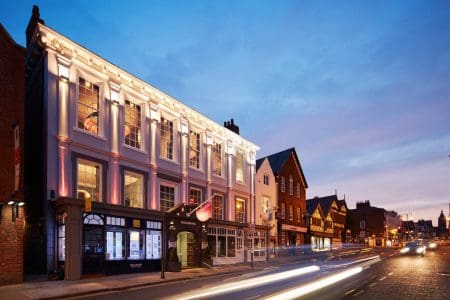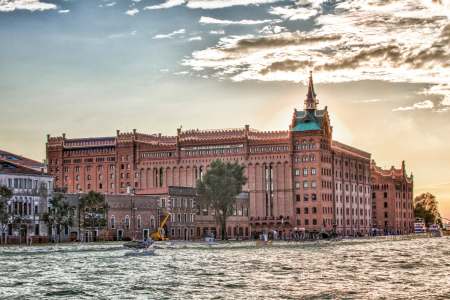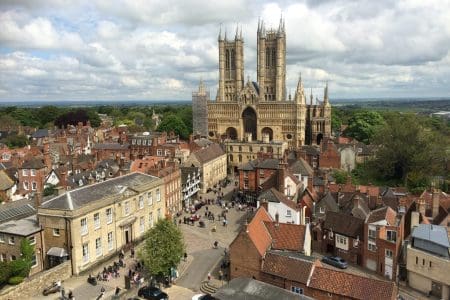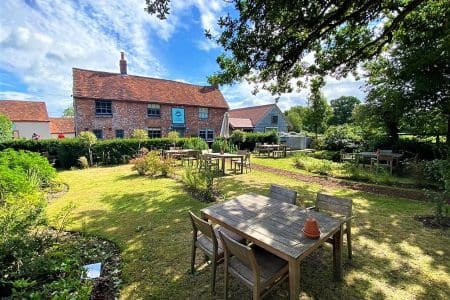From the original December market to the city that created stollen, the source of mulled wine and the first Christmas tree, let Travel Begins at 40 guide you through some of the best Christmas Markets in Europe and the UK, as well as offering a very alternative festival for those who want some spice with their saccharine, and a doggy treat.
Traditional Christmas Markets in Europe
Traditionally the Christmas market, or Christkindlmarkt (Baby Jesus Market), marks the celebration of Christmas during the four weeks of Advent. Originating in Germany, it is to here that we head first on our whistle stop tour of Christmas markets in Europe.
Dresden’s Striezelmarkt is one of the oldest Christmas markets in Europe. Prince Friedrich II granted permission for an open air meat market in 1434, but now Striezelmarkt or stollen market – striezel is stollen in Middle-High German – sees a giant stollen and parade to Altmarkt square in the Baroque Quarter.
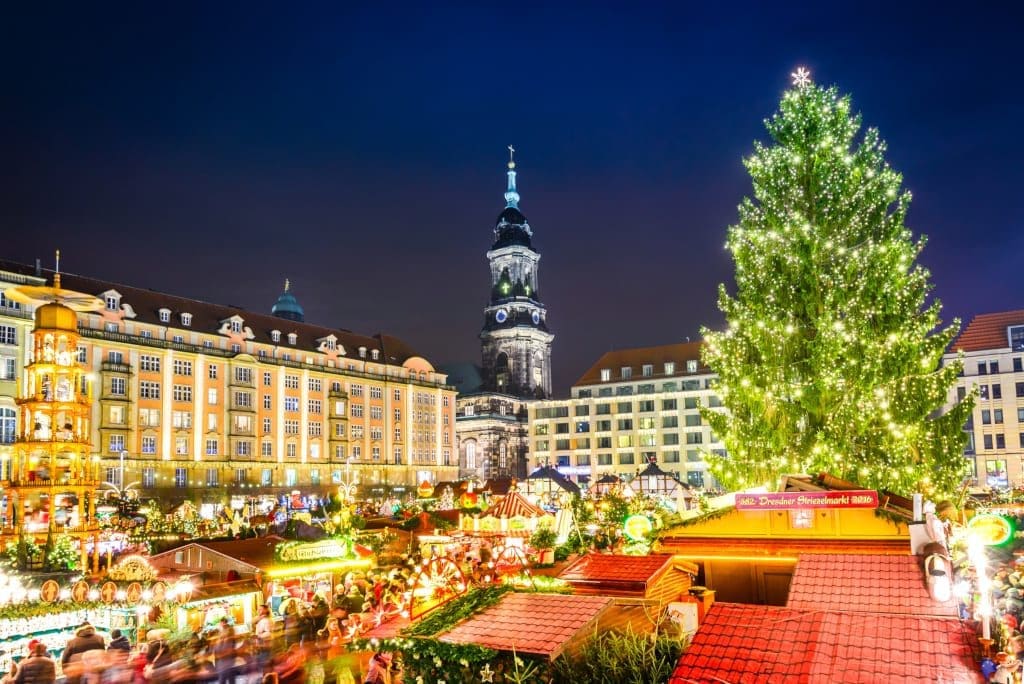
First Christmas Markets in Germany
Christmas markets in Europe originated in the Holy Roman Empire in the late 13th and early 14th centuries. Munich held its first Christmas market in 1310 more than a century before Dresden’s Striezelmarkt in 1434. Frankfurt’s Christmas market can be traced back to 1393 and Augsburg in 1498. But all this lags behind Vienna which had its first December market in 1298.
Drink mulled wine and dine on Saxon delicacies, with eleven Christmas markets from the medieval to the après-ski of the Hüttenzauber – you’ll be spoilt for choice. Departing from the railway station, walk the Christmas mile along Prager Straße to Altmarkt, or visit the Hauptstraße Christmas Market on the opposing bank of the River Elbe.
Albrecht I had no idea of the trend he was setting when he granted permission for the citizens of Austria to hold a December Market or Krippenmarkt in 1298. Now there are over 20 official Christmas or advent markets in the Austrian capital alone.
Join the Vienna Christmas Market in front of the City Hall or the Christmas Village at Belvedere Palace with the glorious baroque residence as its backdrop. Other options include the Christmas Market at Spittelberg, where narrow side streets are crammed with objects d’art, ceramics, jewellery and woolly jumpers. For a more contemporary vibe then sample Winter at MQ, with live music, DJ sets and a unique design market. For times of all Vienna’s markets, click here.
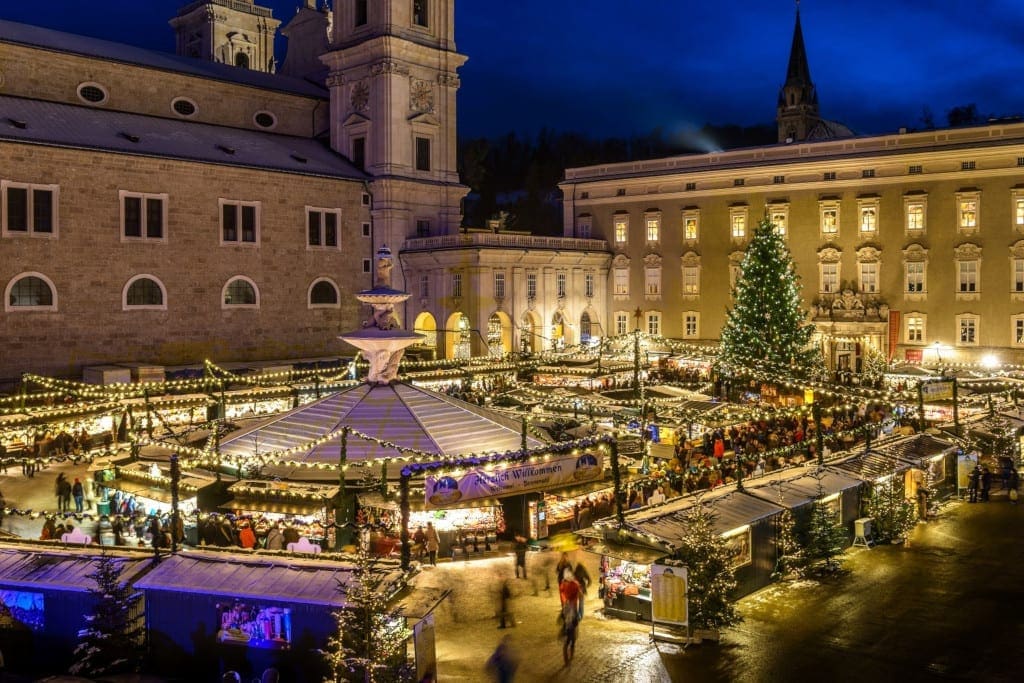
While Vienna gets packed at this time of the year with visitors clambering to the city voted as the best to live, Salzburg is the city to go for the picture postcard Salzburg Christkindlmarkt, which harks back to the 15th Century, when it was called Tandlmarkt. The home of Mozart, Salzburg celebrates its festival for a month around advent. Expect lots of music and an enormous Christmas Tree.
However, it was neither Austria nor Germany that invented the Christmas tree. The Estonian capital of Tallinn lays claim to this title, its Christmas tree dates back to 1441.
Origins of Stollen
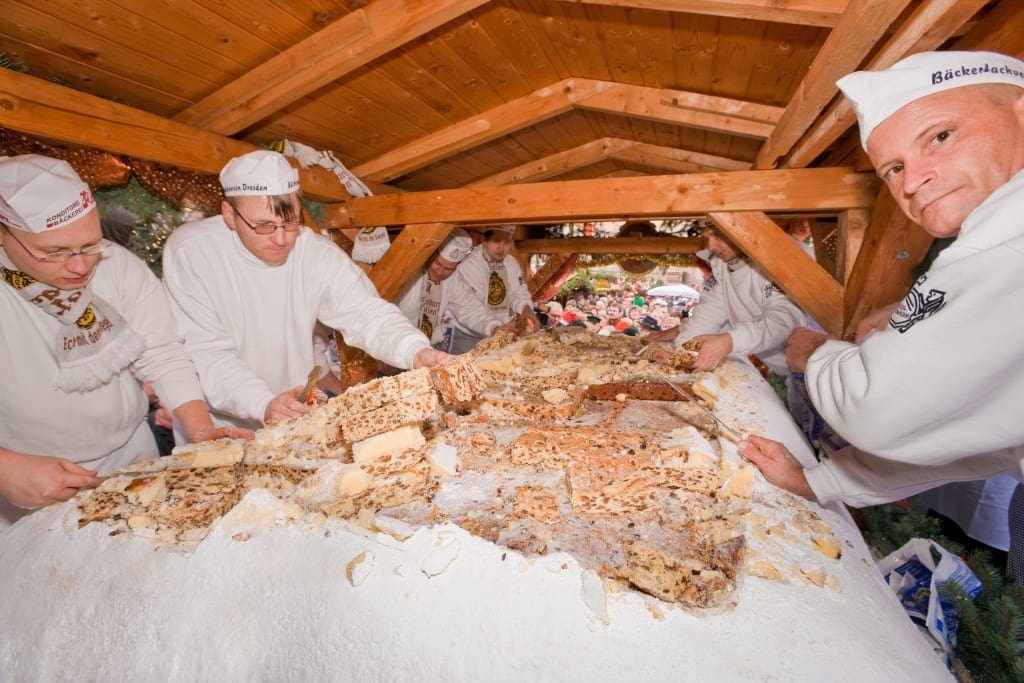
At least Dresden can lay claim to creating the original stollen. The Dresdner Christstollen was first noted in 1474 at St Bartholomew’s hospital in Dresden, although then it did not include butter and was rather a soulless offering. Now you can enjoy the savoury festive treat across Europe and even in a supermarket close to you.
Christmas Markets in UK
Compared to our Germanic brethren across the waters, the Christmas Market in the UK was very much a slow burner, with many markets only originating in the last century.
One of the largest is at Lincoln. In December, the cathedral city becomes the home of the UK Christmas Market as more than 250 stalls are set up in and around Lincoln Castle and Lincoln Cathedral. Just beware of the steep walk leading up the hill to get there – you might need to top up on some mulled wine along the way.
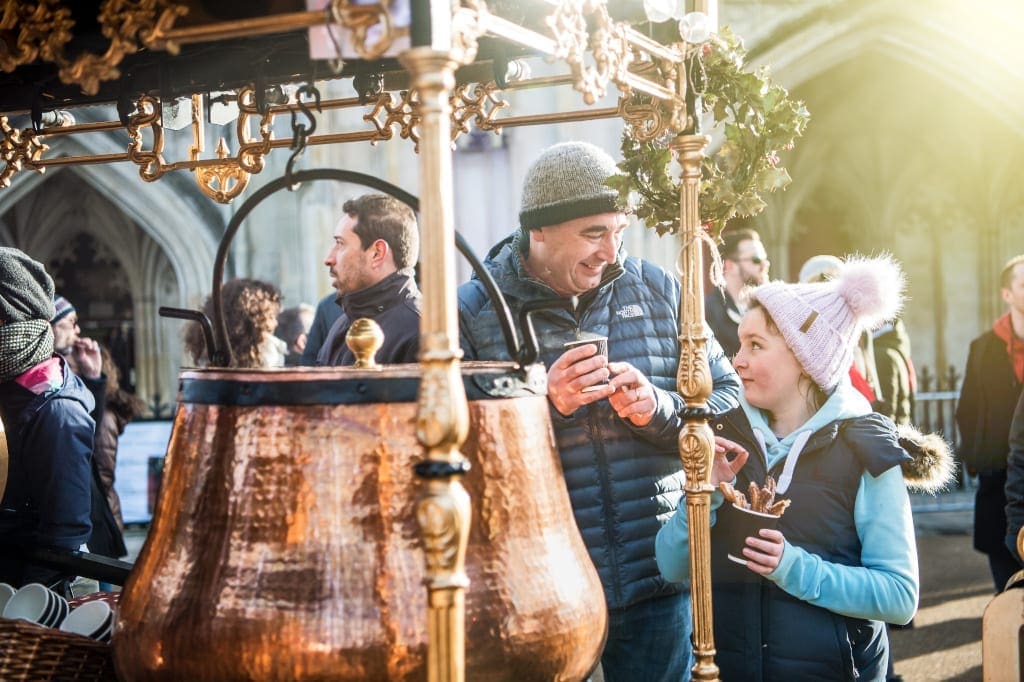
If a traditional UK ‘German’ market is what you are looking for then head to the Winchester Christmas Market. Up to half a million people will flock to the self-dubbed “England’s Christmas Capital” over the month of the festival.
For a more Victorian take on the Christmas theme, there’s the Beverley Festival of Christmas, East Yorkshire. Unlike most of the other festivals listed this is a one-day affair, on 10 December from 10am to 4pm, and takes place in the heart of the medieval Minster town. If all the Christmas cheer become too much for you then head for one of the many pubs and celebrate the spirit of Christmas Past. Or if you are in the capital, you can always go skating at the Hyde Park Winter Wonderland. While Manchester Christmas markets claims to be the biggest in the UK.
If you are planning on visiting the UK over the Christmas period start off by reading our Essential Travel Guide to UK Holidays for the Over 40s?
Let It Snow
Let’s be honest, in the UK, you can never ensure a White Christmas. So, if it’s snow that you want perhaps you should head further north or east.
Krakow, Poland, makes our list for its szopka – portable theatres you can buy and play out Nativity puppet displays. Some reach two metres high and three wide. The Krakow Christmas Market is based around Rynek Glowny, in the heart of the beautiful historic old town.
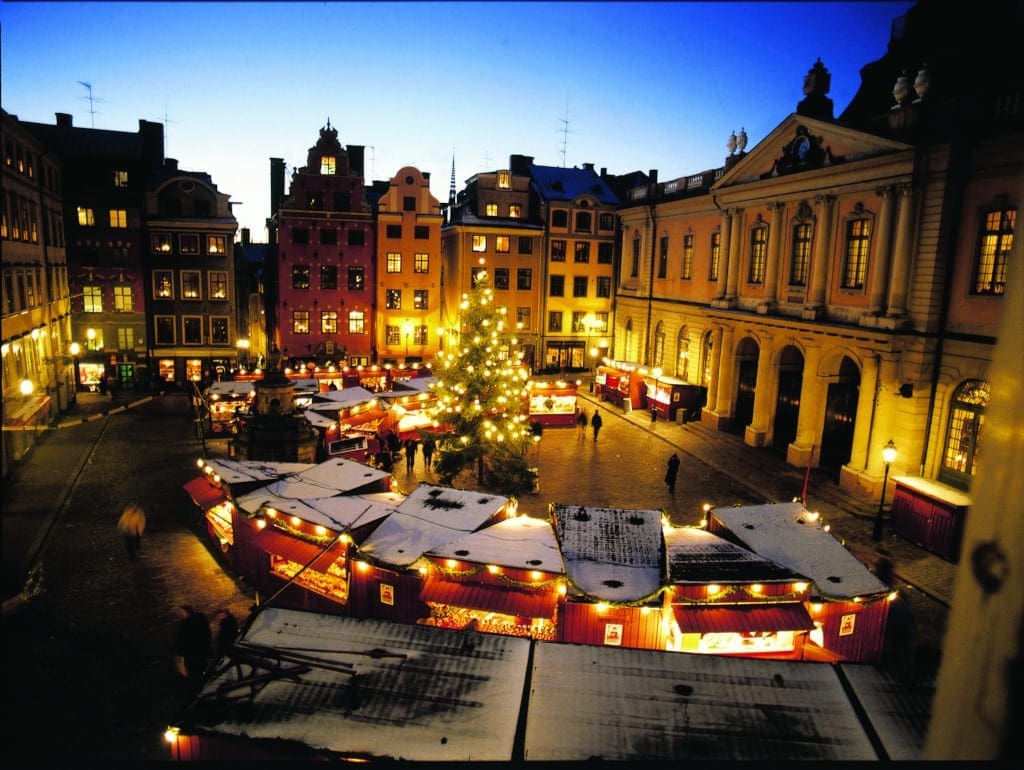
The Czech Republic is not all about Prague, especially at Christmas time. The Brno Christmas Market takes place in the country’s second city. Around Freedom Square there’s a modern vibe with virtual reality displays, live gigs and a designer market. Why not try the special city drinks from a white cupola at the Winter Bar. The Dominican Square has a more traditional take to proceedings. Ideal for families, expect a musical tone to be adopted throughout – after all this is a UNESCO Creative City of Music. There’s also a Cabbage Market – why not?
The Christmas market uses recyclable cups which you can buy from individual stores and then swap for a clean one at the next one. At the end, either take the cup home as a memento or return it to reclaim your deposit.
The Swedish capital of Stockholm has more Christmas markets than Abba appreciation bands, including a fair in the beautiful Gamla Stan old town. While in the Swedish capital why not visit Fotografiska Stockholm photography museum or sample the great Stockholm craft beer scene.
What have the Swedes ever done for us?
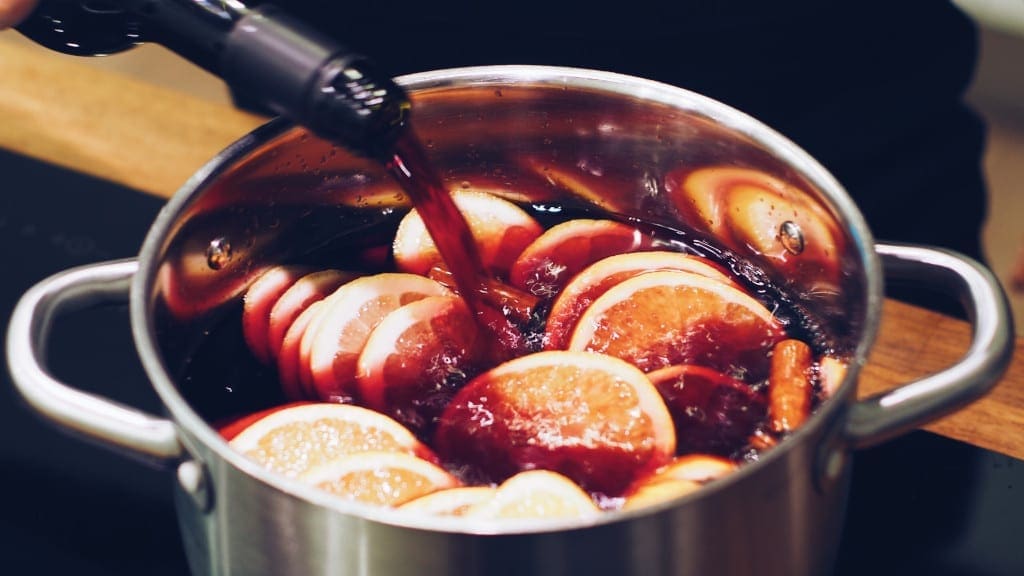
In Life of Brian, John Cleese asks his fellow conspirators in the People’s Front of Judea, or is it the Judean People’s Front, “What have they [the Romans] ever given us?” The lengthy list he reluctantly concedes to includes wine, although wine pre-dated the Romans. However, they did invent a typical Christmas tipple. For as early as the 2nd Century, Roman soldiers began heating their wine to protect themselves from the cold in the most remote parts of the Roman Empire.
In the Middle ages, the wine was mixed with spices, in order to help prevent illness. Herbs and flowers were used to sweeten the often unpalatable concoction. With time the craze for mulled wine faded apart from in Sweden. So, we have the Swedes to thank for the preservation of mulled wine through its spiced wines Claret (with honey) and Lutendrank (with milk).
The word glögg, is first noted in 1609. However, it was not until the 1890s that the drink became linked with Christmas, as Santa Claus bottles were shipped across Europe. Now, many countries create their own blend of mulled wine from red and white wines, to sangria, vermouth and port. Making sure that wherever you are, you’ll never quite know what to expect next.
Christmas in Chocolate
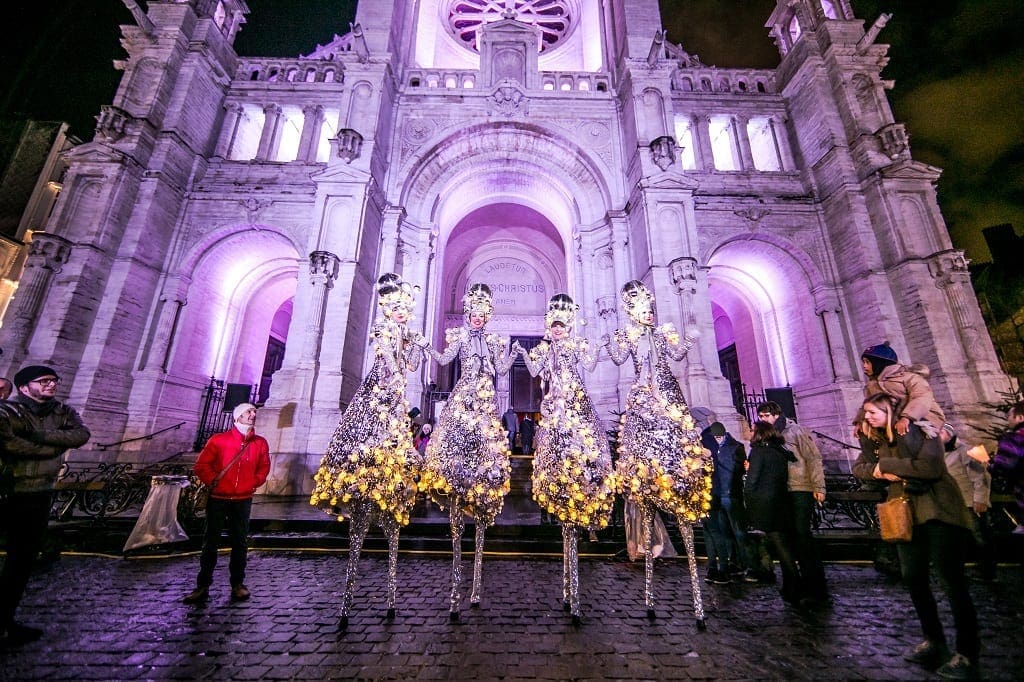
However, if chocolate is your thing then Belgium is the place to go at Christmas. Dubbed Winter Wonders the Brussels Christmas Market is spread over two kilometres through cobbled streets and medieval market squares full of snow-dusted market stalls, lively pop-up cafés and bars offering oysters, salmon cooked on embers, steamed snails, Flemish stew with fries, mountains of waffles, mulled wine and hot chocolate that would impress even Hercule Poirot. All accompanied by an endless variety of regional beers and genevers – the national gin-based liquor. There are also 270 wooden gingerbread-house-style chalets.
When you’re there, why not pop over also to the Antwerp Christmas Market – Belgium is such a small country anyway. With its stunning background of medieval houses and cathedral, and a host of special, cosy winter bars, the Antwerp Christmas Market is smaller in scale than the one in the capital but makes up in size with ambience. Bring your ice skates and have a swirl on the ice rink around the statue of the medieval master painter Rubens, an Antwerp local.
And a Bit of Spice
Definitely not for everyone, Santa Pauli in Hamburg is the place for those who prefer more spice than sugar with their mulled wine. Hamburgers stroll along the Spielbudenplatz in the Reeperbahn, drink mulled wine by the fire on the winter deck, visit the open-air art gallery and at night venture to the over-18s fir forest with its strip shows and erotic readings. You can even provide your own voice over to xx-rated movies. There is also a Sunday programme for kids, although I assume this is restricted to the day-time activities.
With so many diverse Christmas markets in Europe, there really is no reason for not having a very merry Christmas this year.
